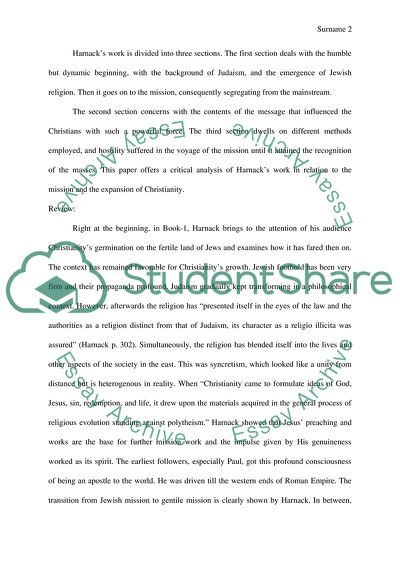Cite this document
(Mission and Expansion of Christianity in the First Three Centuries Book Report/Review Example | Topics and Well Written Essays - 1250 words - 1, n.d.)
Mission and Expansion of Christianity in the First Three Centuries Book Report/Review Example | Topics and Well Written Essays - 1250 words - 1. https://studentshare.org/religion-and-theology/1793067-essay-on-the-book-christianity-in-the-first-three-centuries-by-adolf-harnack
Mission and Expansion of Christianity in the First Three Centuries Book Report/Review Example | Topics and Well Written Essays - 1250 words - 1. https://studentshare.org/religion-and-theology/1793067-essay-on-the-book-christianity-in-the-first-three-centuries-by-adolf-harnack
(Mission and Expansion of Christianity in the First Three Centuries Book Report/Review Example | Topics and Well Written Essays - 1250 Words - 1)
Mission and Expansion of Christianity in the First Three Centuries Book Report/Review Example | Topics and Well Written Essays - 1250 Words - 1. https://studentshare.org/religion-and-theology/1793067-essay-on-the-book-christianity-in-the-first-three-centuries-by-adolf-harnack.
Mission and Expansion of Christianity in the First Three Centuries Book Report/Review Example | Topics and Well Written Essays - 1250 Words - 1. https://studentshare.org/religion-and-theology/1793067-essay-on-the-book-christianity-in-the-first-three-centuries-by-adolf-harnack.
“Mission and Expansion of Christianity in the First Three Centuries Book Report/Review Example | Topics and Well Written Essays - 1250 Words - 1”. https://studentshare.org/religion-and-theology/1793067-essay-on-the-book-christianity-in-the-first-three-centuries-by-adolf-harnack.


